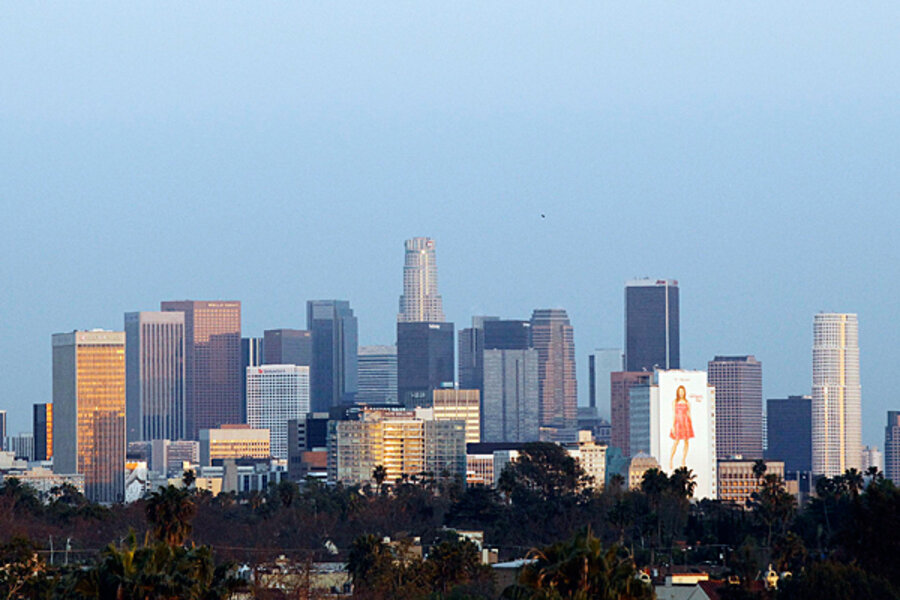L.A. earthquake: Blasé Angelinos snooze through temblor
Loading...
| Los Angeles
In a fault zone with 10,000 temblors a year, the stories have become so commonplace as to almost not make the local TV news anymore. They are framed by conflicting reports that confuse the outsider:
Business consultant Tom Drucker, who lives on the third-floor of a stilted complex on reclaimed land near the beach – and thus feels crashing storm waves – felt nothing. Carey Wood, a resident of an inland Venice bungalow was shaken out of sleep.
“It woke me up, which is crazy because everyone who knows me knows nothing can wake me up,” said Ms. Wood.
Both are just two miles from the epicenter of a 3.7 magnitude earthquake that rattled nerves here at 3:18 a.m. Local officials say no damage or injuries have been reported from the temblor which the USGS has said hit at a depth of 5.6 miles. They said the epicenter was 12 miles from the downtown Los Angeles Civic Center.
According to the Berkeley Seismological Laboratory over 37,000 quakes a year happen in California, about 10,000 in Southern California.
Dr. Kate Hutton, seismologist from Caltech, says “there’s probably nothing of significance to this except that it is a good reminder to everyone that they live in a fault zone and they need to be ready for the future. Check out your supplies, batteries and make sure that your storable food is not out of date.”
Morning talk shows made passing reference to the quake, which was followed by a 2.4 magnitude aftershock at 5:27 a.m. Commentators note that such quakes are so commonplace that they make conversation but very little mention in the media anymore.
The Los Angeles Times, for instance, resorted to quoting Twitter responses.
Twitter user LucasCruikshank tweeted, “Apparently there was an earthquake in Los Angeles tonight. I was convinced the man in the apartment above me was doing violent jumping jacks.”
And the Times quotes the sheriff’s department as making a light remark comparing the low news value to something really happening – civil unrest in Orange County about officer-involved shootings that got 40 arrested last night.
“We received no calls,” Tommy Moore, Los Angeles County Sheriff’s Dept. spokesman said. “I think everybody was sound asleep – at least if they didn’t live in Anaheim.”
According to the San Francisco Chronicle, Dozens of people from as far away as Riverside and the San Fernando Valley logged onto the USGS website to report feeling the jolt. And Fire Department spokesman Matt Spence says firefighters rolled out of stations citywide and surveyed 470 square miles. No infrastructure or other damage was found.







